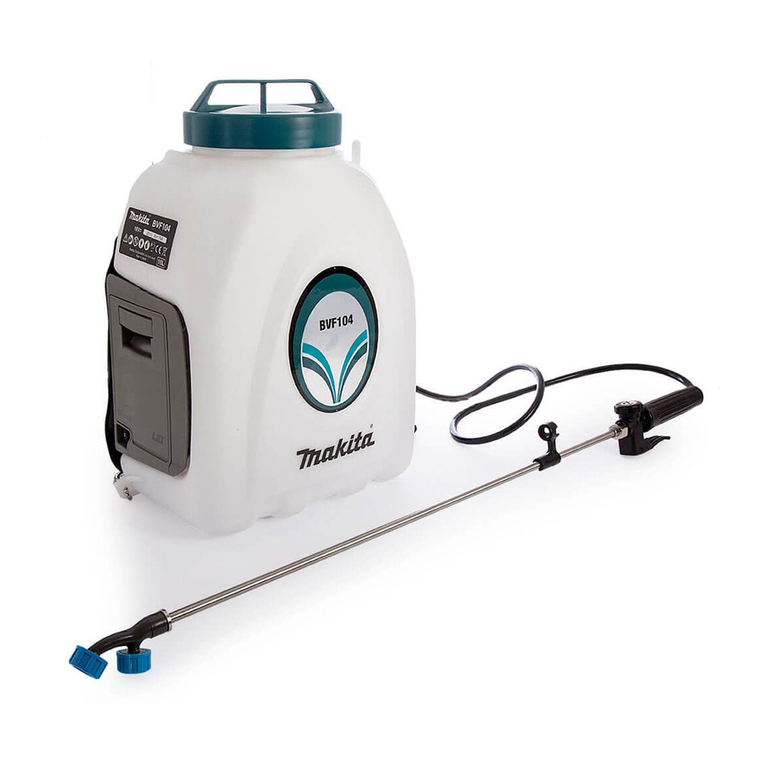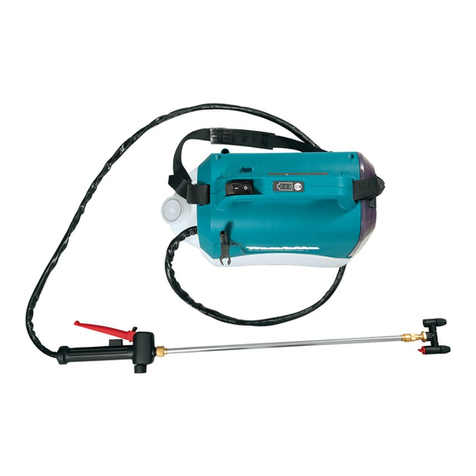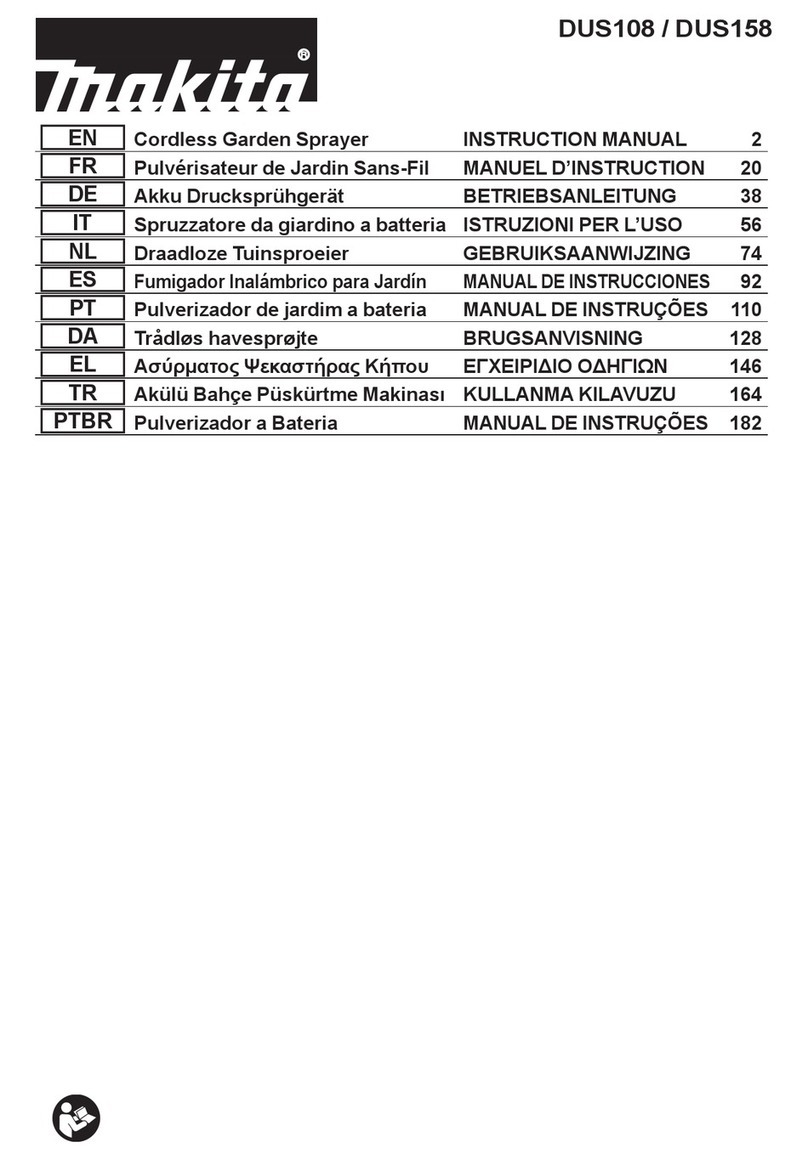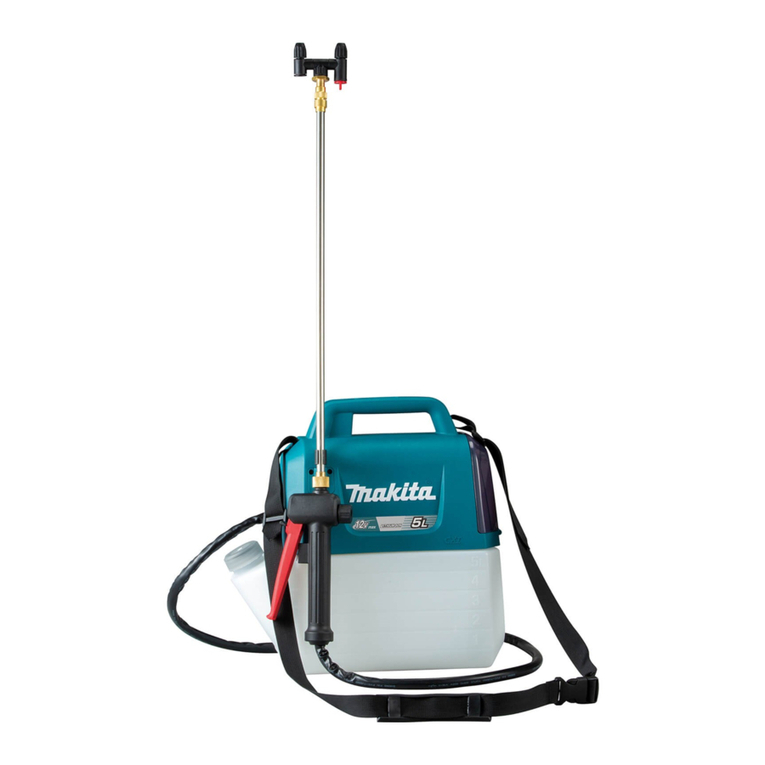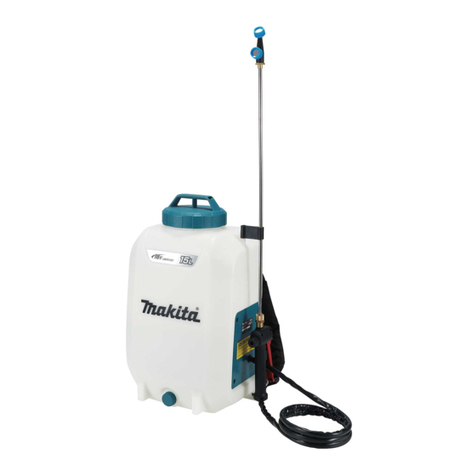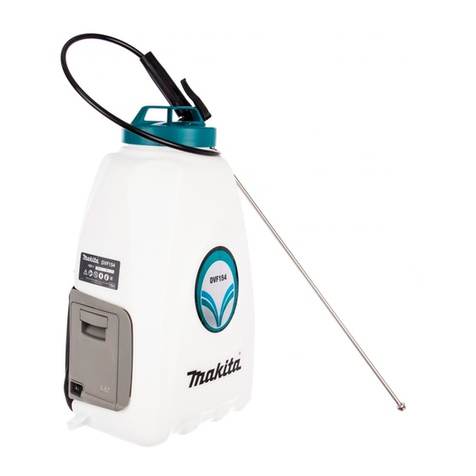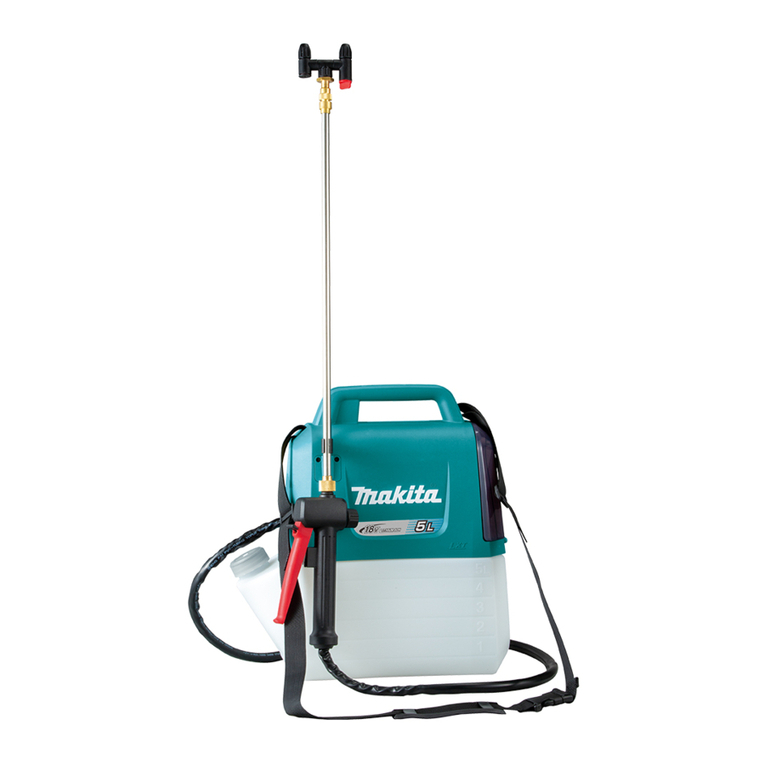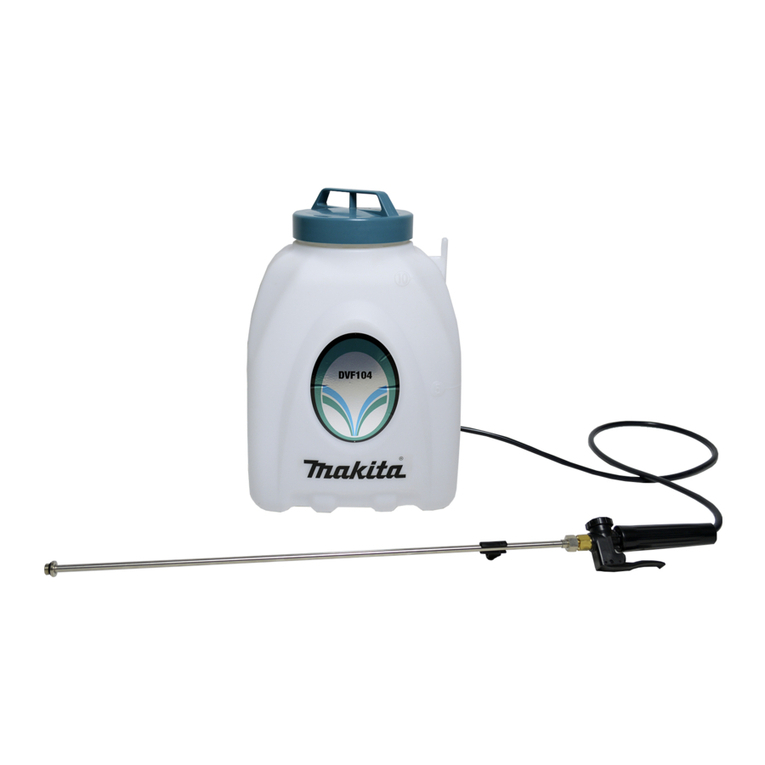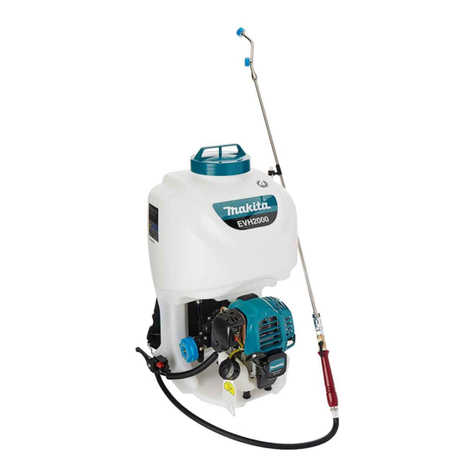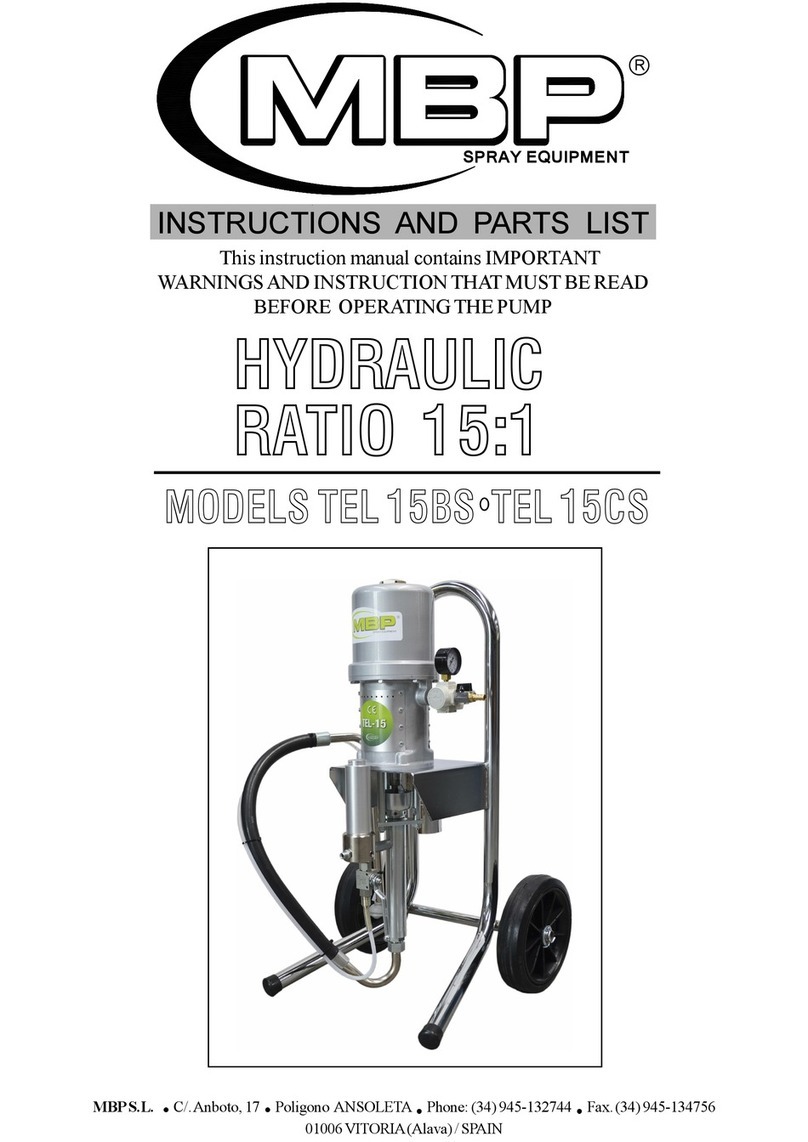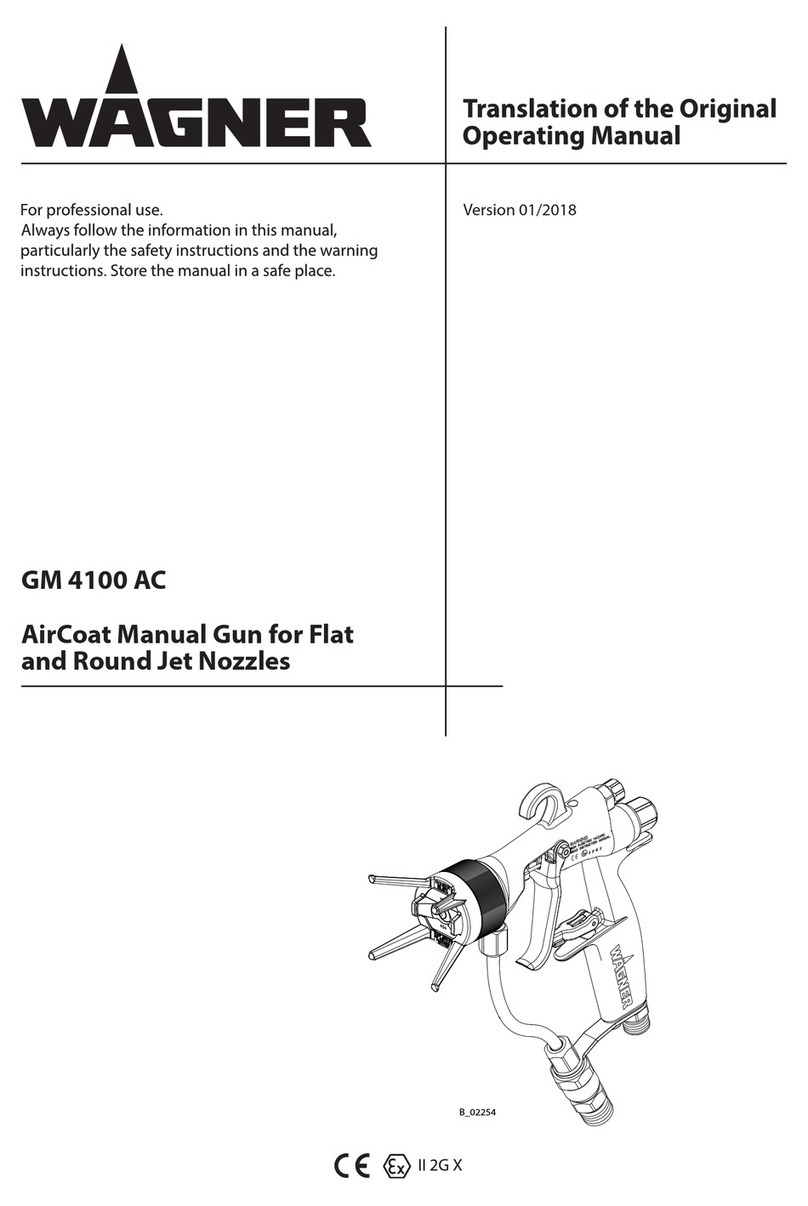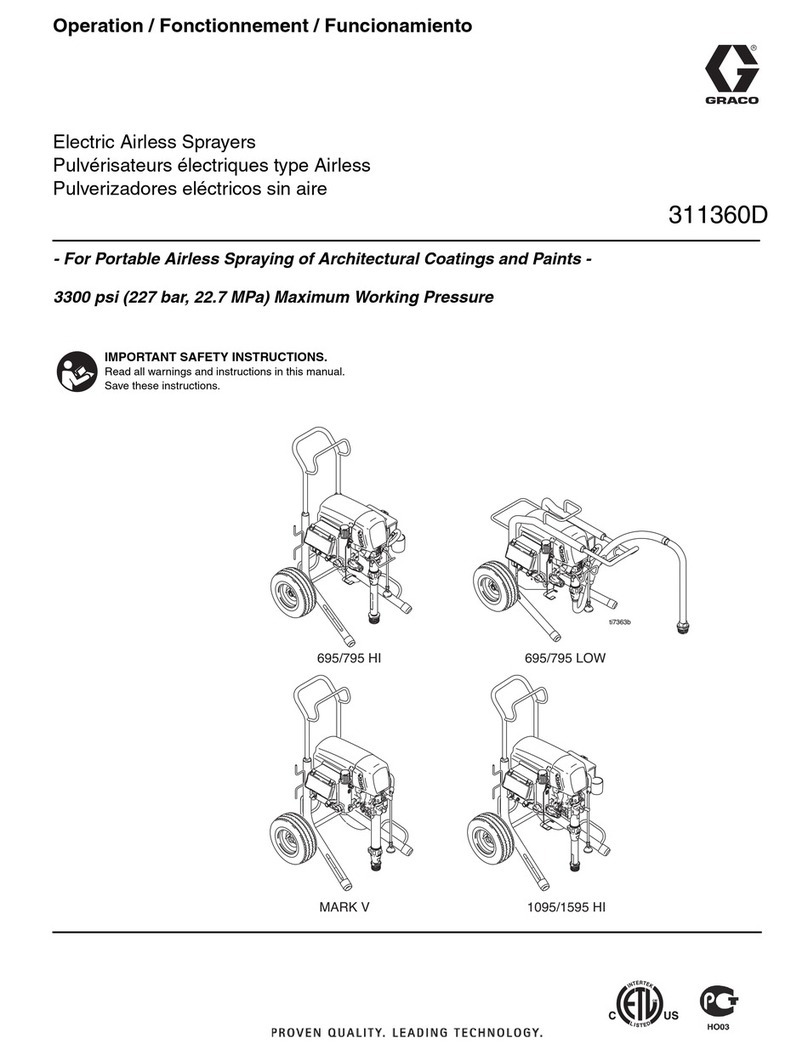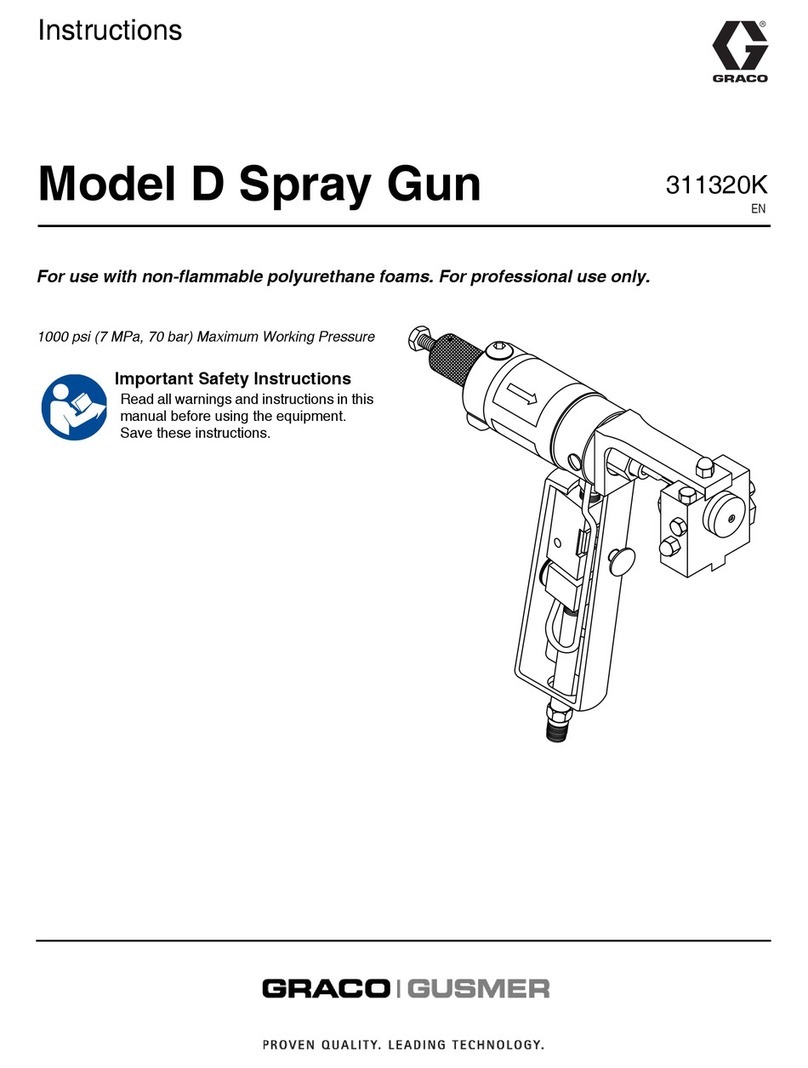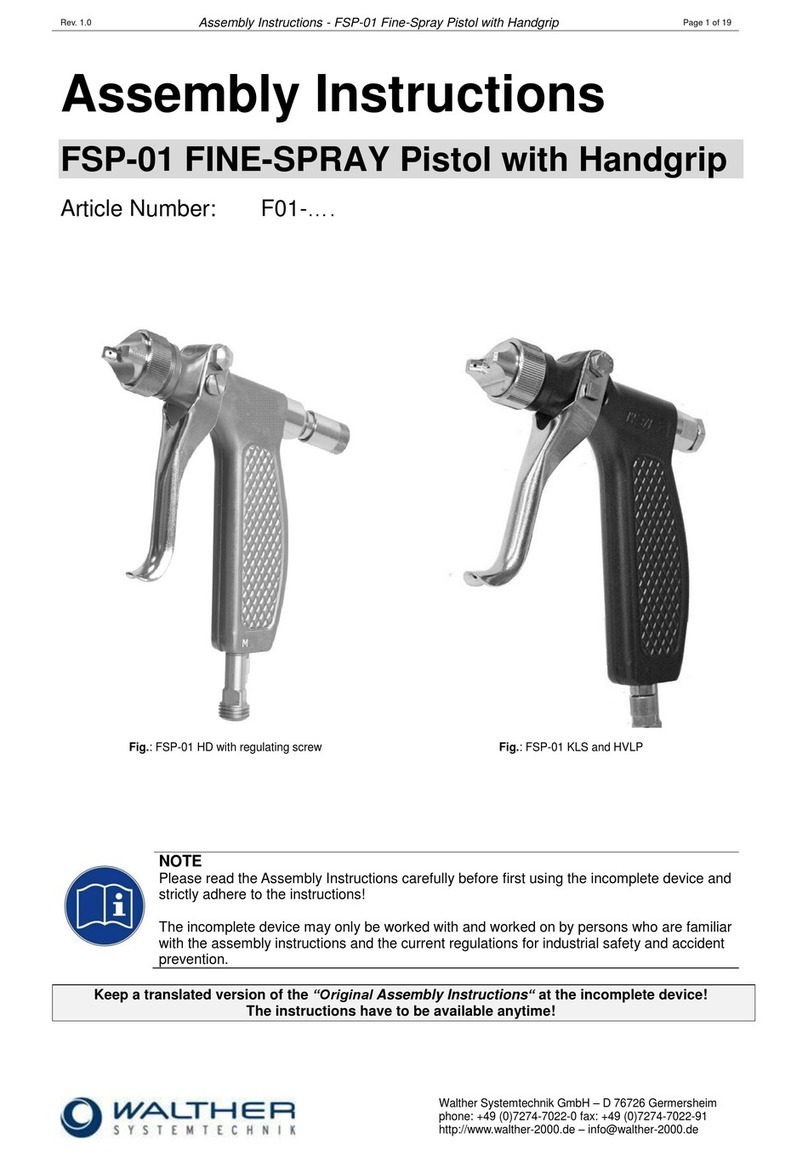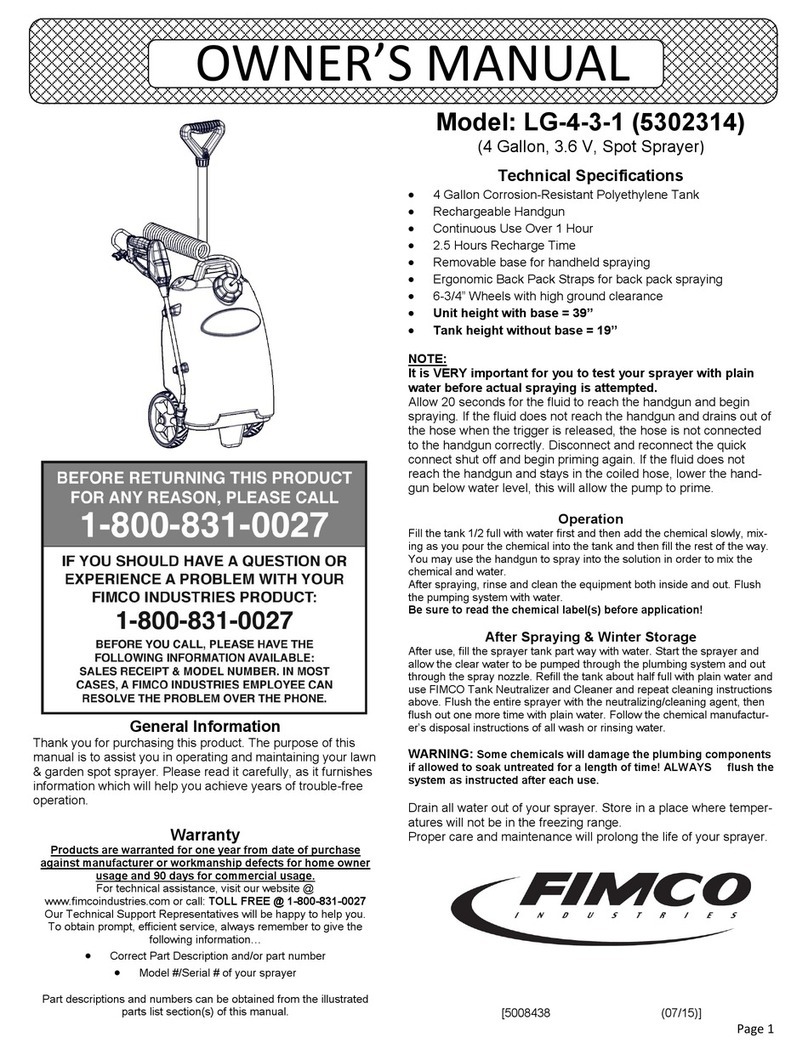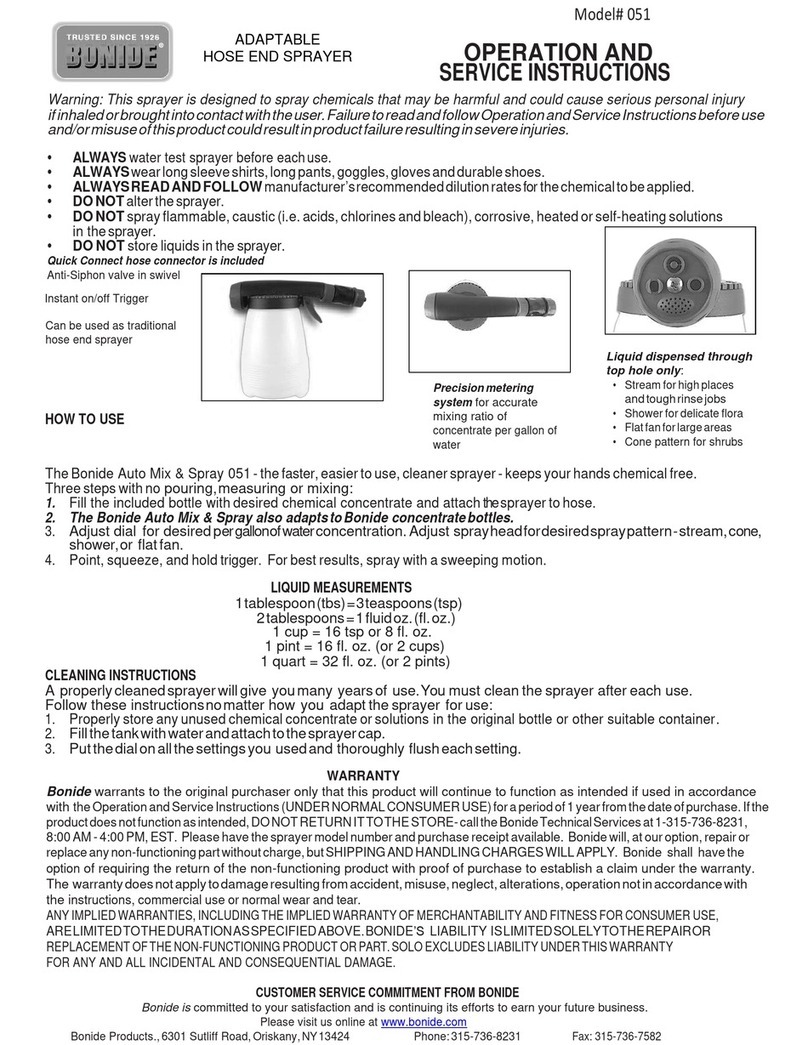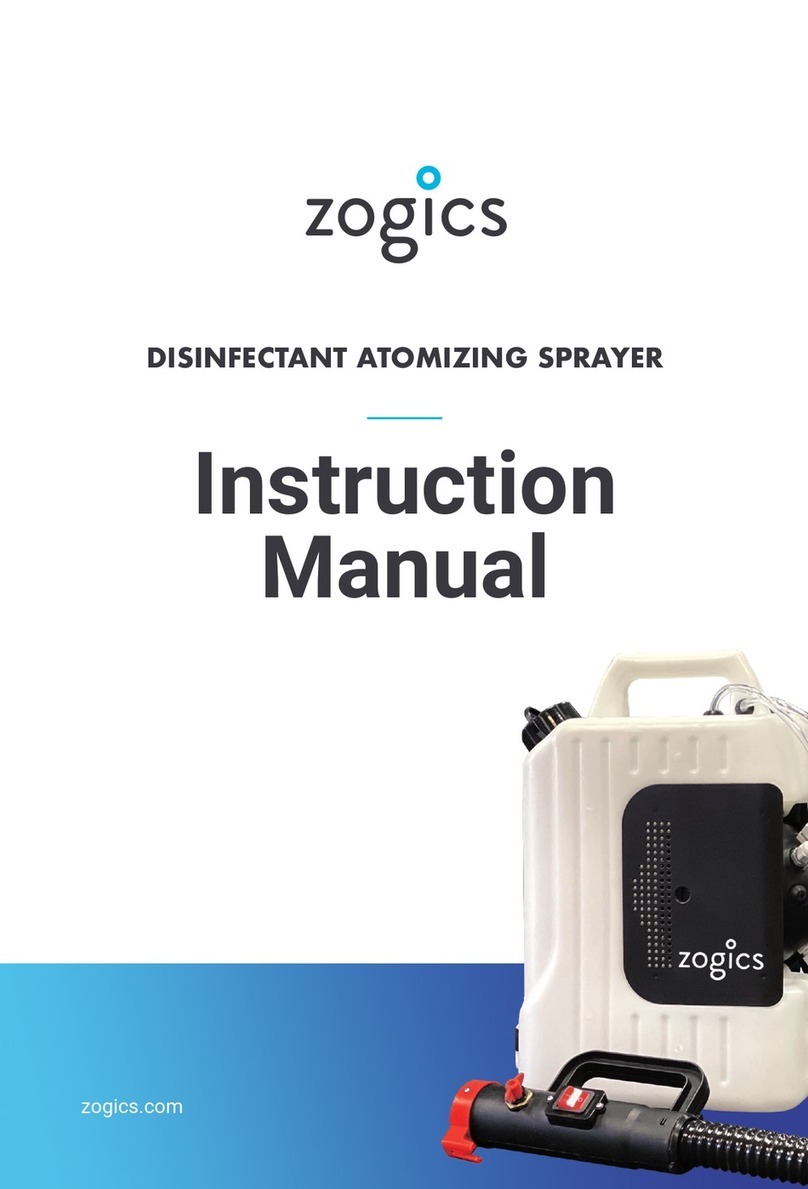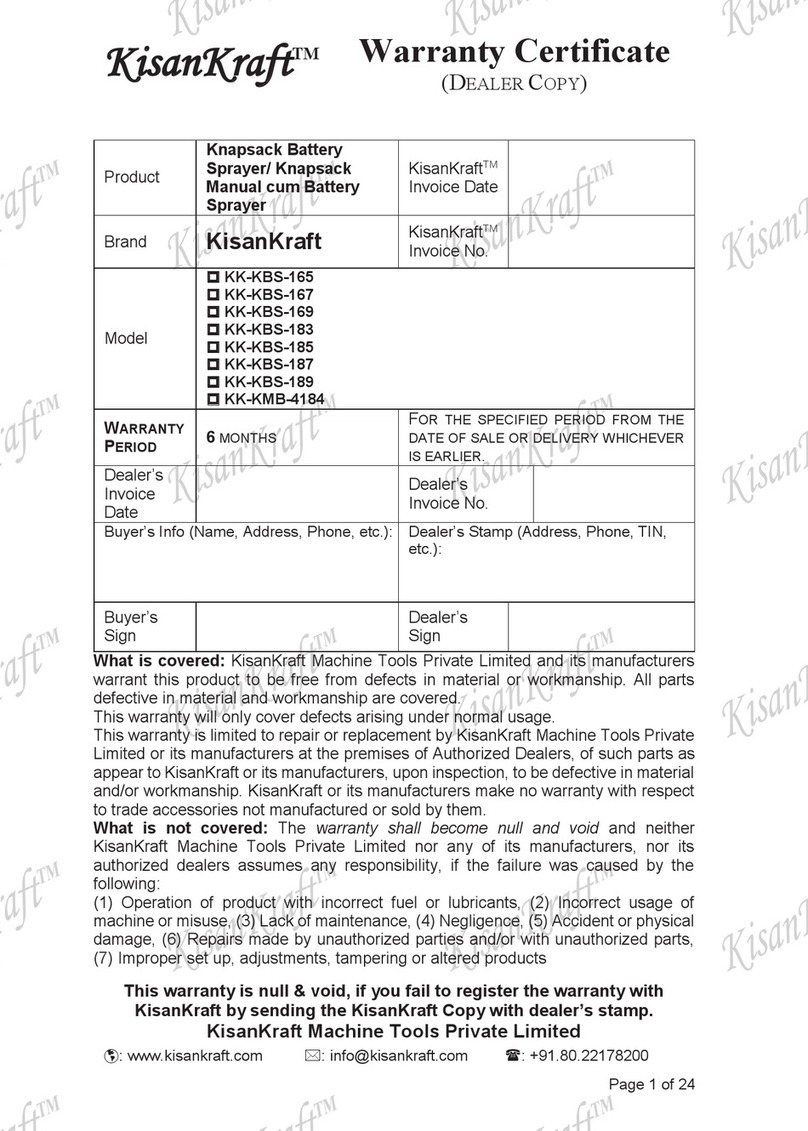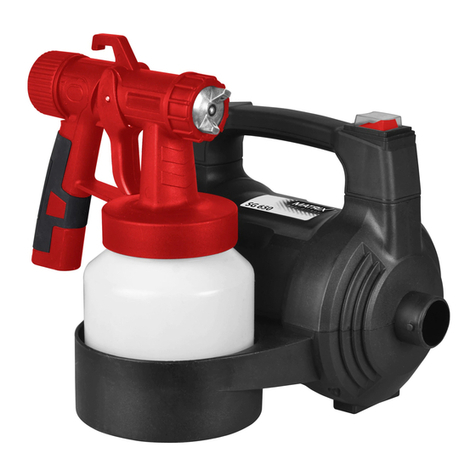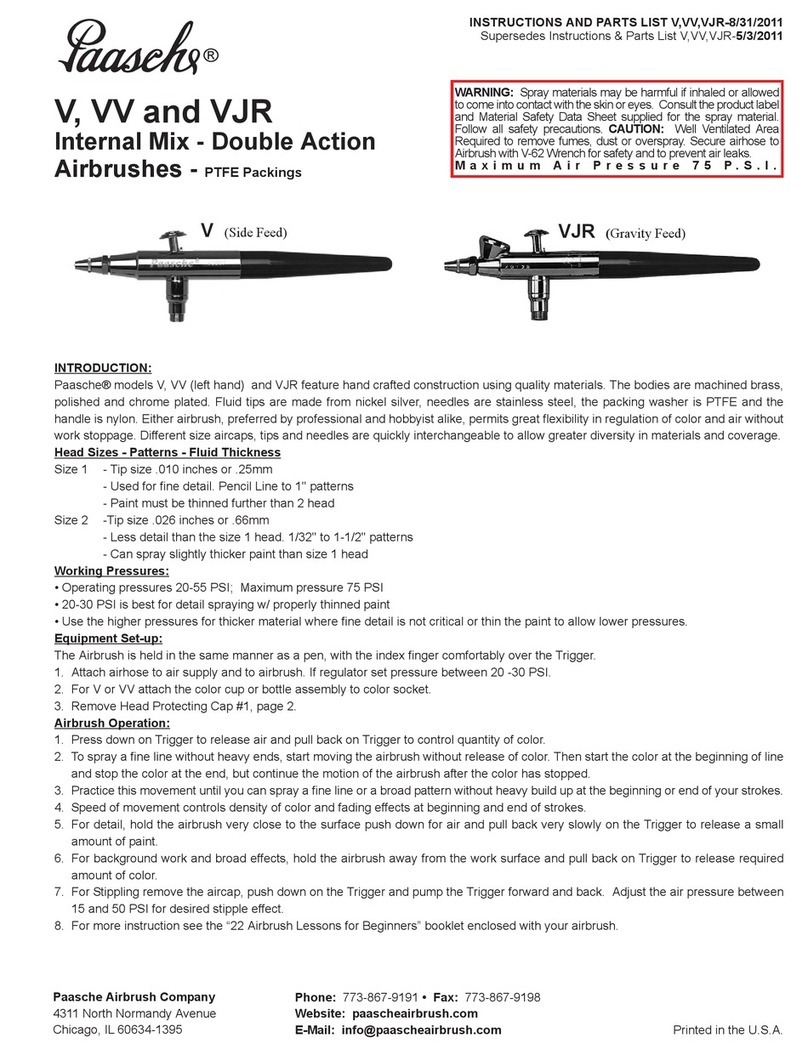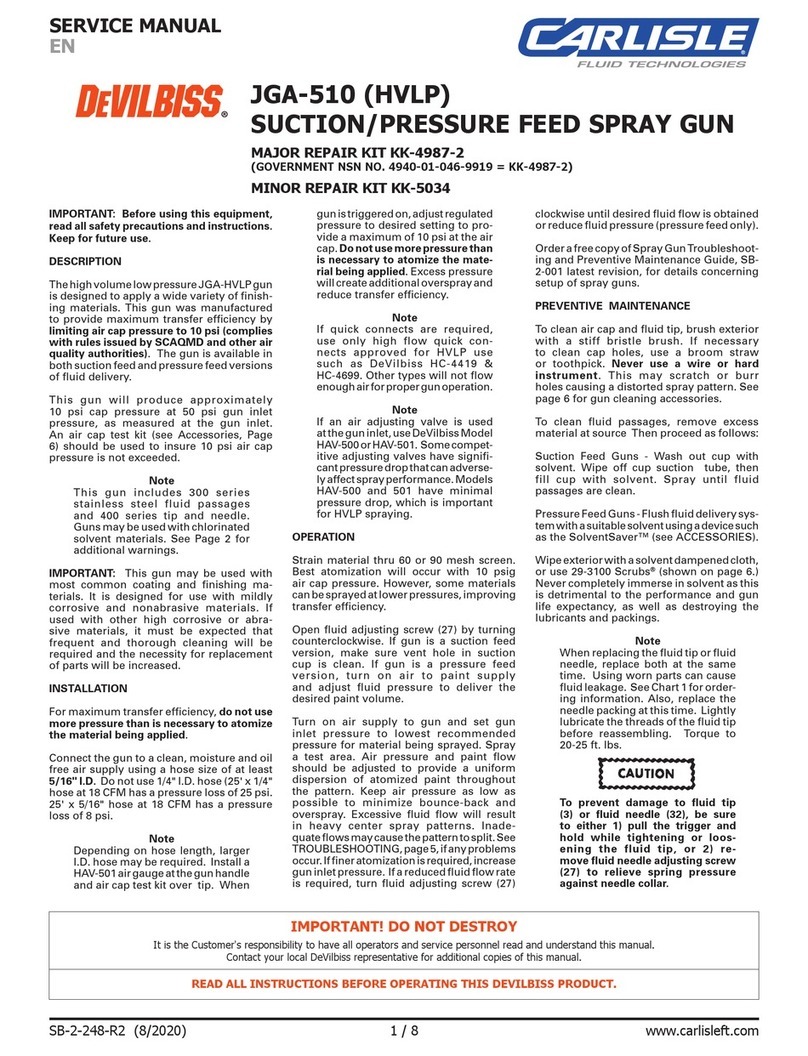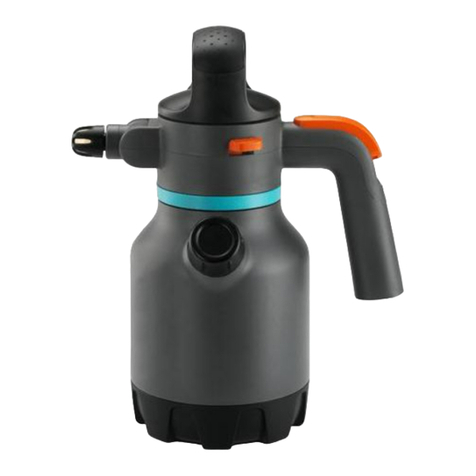
5
gloves, long-sleeved pest-control jacket, long
trousers and gumboots), so that skin is not
exposed when spraying.
19.
Always load the tank with chemical or clean water
when operating the sprayer, as operating the
sprayer with an empty tank may damage the pump.
20. If the sprayer stops running, or an abnormal
sound is emitted, immediately switch OFF the
sprayer, and discontinue use.
21.
Constantly be aware of wind direction while
spraying, to ensure spraying from upwind to
downwind, in order to prevent direct chemical
contact with body. Also, be careful to keep
chemical from reaching surroundings, and stop
using the sprayer when the wind is strong.
22. As there is a risk of chemical poisoning when
spraying in a greenhouse, always ventilate
while spraying.
23. Avoid spraying when atmospheric
temperature is high.
24. Avoid prolonged operation of sprayer.
Whenever possible, rotate operators.
25.
If even a slight headache or dizziness, etc., occurs,
stop spraying work immediately, and consult a
doctor. Moreover, be sure to clearly inform the
doctor of the name of the agrochemical being used,
and the operating circumstances.
26. In cases where spray status deteriorates and
nozzle needs cleaning, there is a risk of the
chemical liquid coming into contact with the
face, so be sure to switch OFF the sprayer,
and then remove the nozzle to clean.
27. Be sure to dispose of wastewater generated
from washing used containers and chemical
tank appropriately in a location where it will
not flow into rivers and streams and/or
contaminate groundwater.
28.
After spraying, if chemical remains in the
chemical tank, spray hose, spray pipe and nozzle,
it may cause spray injury. Be sure to fully wash
away residual chemical with clean water - in
particular, after spraying with herbicide.
29. Keep agrochemicals away from children. Be
sure to store residual chemicals in
chemical-designated storage containers.
30. After completion of spraying, be sure to wash
(spray wash) equipment with clean water,
drain off the washing water, and store indoors
away from direct sunlight and freezing
temperatures, and out of reach of children.
31. After completion of spraying, be sure to
thoroughly wash entire body with soap, rinse
eyes, and gargle. During spraying period,
change clothes daily.
SAVE THESE INSTRUCTIONS.
WARNING:
DO NOT let comfort or familiarity with product
(gained from repeated use) replace strict adherence
to safety rules for the subject product. MISUSE or
failure to follow the safety rules stated in this
instruction manual may cause serious personal
injury.
ENC007-8
IMPORTANT SAFETY
INSTRUCTIONS
FOR BATTERY CARTRIDGE
1. Before using battery cartridge, read all
instructions and cautionary markings on (1)
battery charger, (2) battery, and (3) product
using battery.
2. Do not disassemble battery cartridge.
3. If operating time has become excessively
shorter, stop operating immediately. It may
result in a risk of overheating, possible burns
and even an explosion.
4.
If electrolyte gets into your eyes, rinse them out
with clear water and seek medical attention right
away. It may result in loss of your eyesight.
5. Do not short the battery cartridge:
(1) Do not touch the terminals with any
conductive material.
(2) Avoid storing battery cartridge in a
container with other metal objects such as
nails, coins, etc.
(3) Do not expose battery cartridge to water
or rain.
A battery short can cause a large current flow,
overheating, possible burns and even a breakdown.
6. Do not store the tool and battery cartridge in
locations where the temperature may reach or
exceed 50 ゚C (122 ゚F).
7. Do not incinerate the battery cartridge even if
it is severely damaged or is completely worn
out. The battery cartridge can explode in a fire.
8. Be careful not to drop or strike battery.
9. Do not use a damaged battery.
10. Follow your local regulations relating to
disposal of battery.
SAVE THESE INSTRUCTIONS.
Tips for maintaining maximum battery life
1. Charge the battery cartridge before
completely discharged.
Always stop tool operation and charge the
battery cartridge when you notice less tool
power.
2. Never recharge a fully charged battery
cartridge.
Overcharging shortens the battery service life.
